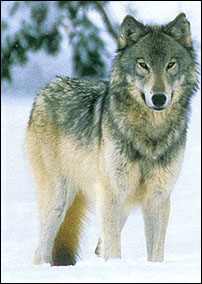Un-Natural Selection

After years of being hunted, snared, and picked-off from airplanes, Alaska’s wolves (6,000 at last count, by far the biggest population of any state) are going under the knife. In 1996, Alaska Department of Fish and Game (ADF&G) biologists began sterilizing alpha (dominant) males and females in the Fortymile region near Fairbanks, in the hopes of decreasing predation and restoring the Fortymile caribou herd to its legendary, probably mythical, size of 500,000. Three years ago, the Fortymile caribou herd was down enough to reduce the harvest quota from 450 to 150 bull caribou, and the 1996 season saw only 906 hunters. The state wants a bigger harvest again.
Soon after the Alaska Board of Game put the sterilization plan into effect, it was deemed “untested” and “based on assumptions” by the National Academy of Sciences. Its tactics include reducing 15 nearby wolf packs to a pair of animals each and relocating “subordinate wolves.”
The plan’s opponents, like Cindy Lowery of the Alaska Wildlife Alliance, think sterilization is the same tired story in a new package. “The impetus behind this plan,” she says, “is the same one underlying most wolf control plans—the ADF&G’s desire to artificially increase hunting.”
In the ADF&G’s eyes, just about every wolf kill is a legal one, even the 1996 shooting of two collared wolves who were lying drugged beside a snowmobile trail. “Subsistence” hunting loopholes in ADF&G regulations make wolves fair game almost year-round.
According to wildlife scientist Gordon Haber, who’s been studying Alaskan wolves for 30 years, the sterilization program will leave Fortymile wolves teetering on the brink of extinction. As Haber sees it, hunters are “asking for a kind of socialism. They want the state to guarantee them a caribou outside their back door.” Return to Troubled Homecoming

